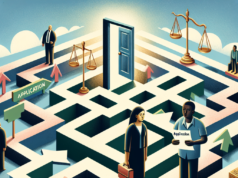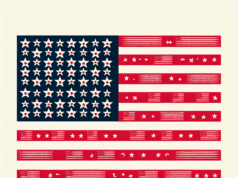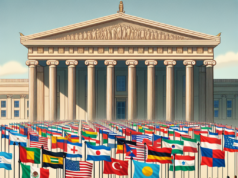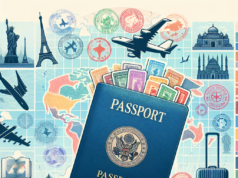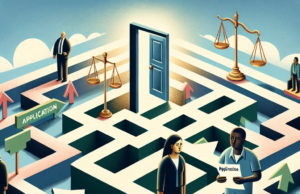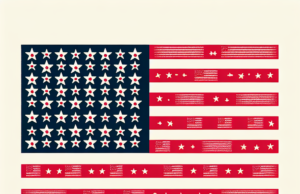
The immigration reform debate in the United States has reached a critical juncture, marked by heightened tensions and a complex web of political, social, and economic factors. As the nation grapples with an influx of migrants, the need for comprehensive reform has never been more pressing. This article aims to unpack the current state of immigration reform, identify key stakeholders, explore historical contexts, examine major controversies, evaluate proposed solutions, and predict potential outcomes for the future of immigration policy in the U.S.
Understanding the Current State of Immigration Reform in the United States
The current state of immigration reform in the United States is characterized by a fragmented and often contentious landscape. With millions of undocumented immigrants residing in the country, the Biden administration has made attempts to address the issue through various executive actions and proposed legislation. However, partisan divisions in Congress have stymied significant progress, leading to a patchwork of state-level policies that often contradict federal guidelines. The ongoing humanitarian crisis at the southern border, exacerbated by economic instability and violence in Central America, has further complicated the discourse, prompting calls for a more humane and effective immigration system that balances national security with compassion.
Key Stakeholders in the Immigration Reform Debate: Who’s Involved and Why
The immigration reform debate involves a diverse array of stakeholders, each with distinct interests and motivations. Key players include federal and state lawmakers, advocacy groups, business leaders, and immigrant communities. Politicians often leverage immigration as a pivotal issue to galvanize their bases, while advocacy organizations push for policies that protect the rights of immigrants and promote pathways to citizenship. Business leaders, particularly in industries reliant on immigrant labor, advocate for reforms that address labor shortages and streamline visa processes. Meanwhile, immigrant communities themselves are directly affected by policy changes, making their voices crucial in shaping the narrative around reform.
Historical Context: How Past Policies Shape Today’s Immigration Challenges
To understand the current immigration reform debate, it is essential to consider the historical context of U.S. immigration policy. Over the decades, various laws and executive actions have shaped the landscape, from the Immigration and Nationality Act of 1965, which ended discriminatory quotas, to the Illegal Immigration Reform and Immigrant Responsibility Act of 1996, which intensified enforcement measures. The Deferred Action for Childhood Arrivals (DACA) program, established in 2012, provided temporary relief for certain undocumented youth but has faced legal challenges that underscore the fragility of immigration protections. These historical policies have created a complex environment where legal pathways to immigration are often limited, contributing to the current challenges faced by millions of undocumented individuals.
Major Controversies Surrounding Immigration Reform: Perspectives and Opinions
The immigration reform debate is rife with controversies that reflect deep-seated ideological divides. Proponents of reform argue for a compassionate approach that recognizes the contributions of immigrants to society and the economy, advocating for pathways to citizenship and protections for vulnerable populations. Conversely, opponents often emphasize national security concerns and the perceived economic burden of undocumented immigrants, calling for stricter enforcement measures and border security enhancements. The debate is further complicated by misinformation and fear-mongering, which can skew public perception and hinder constructive dialogue. As a result, finding common ground remains a significant challenge in the pursuit of comprehensive reform.
Proposed Solutions: Evaluating Legislative Efforts and Their Implications
In response to the ongoing immigration crisis, various legislative proposals have emerged, each with its own implications for the future of immigration policy. The U.S. Citizenship Act of 2021, introduced by the Biden administration, seeks to provide a pathway to citizenship for undocumented immigrants, enhance border security, and reform the visa system. However, bipartisan support has been elusive, with many Republicans advocating for more stringent measures. Other proposals, such as the DREAM Act, focus specifically on protecting undocumented youth, while some states have enacted their own laws to address local immigration issues. Evaluating these proposals requires a careful consideration of their potential impacts on immigrant communities, the economy, and national security.
The Future of Immigration Reform: Predictions and Potential Outcomes Ahead
Looking ahead, the future of immigration reform in the United States remains uncertain, shaped by ongoing political dynamics and public sentiment. As the 2024 elections approach, immigration is likely to remain a focal point in campaign rhetoric, influencing both voter behavior and legislative priorities. If Democrats retain control of Congress, there may be renewed efforts to push comprehensive reform, albeit with potential compromises to appease moderate lawmakers. Conversely, if Republicans gain power, a shift towards stricter enforcement and reduced pathways for legal immigration could ensue. Ultimately, the outcome will depend on the ability of stakeholders to engage in constructive dialogue and find common ground amidst a polarized political landscape.
===
The immigration reform debate in the United States is a multifaceted issue that reflects the nation’s values, challenges, and aspirations. As stakeholders continue to navigate the complexities of this critical topic, the need for a balanced and humane approach to immigration policy remains paramount. The future of immigration reform will depend on the collective will of lawmakers, advocacy groups, and the public to address the pressing challenges while honoring the rich tapestry of diversity that defines the United States.

